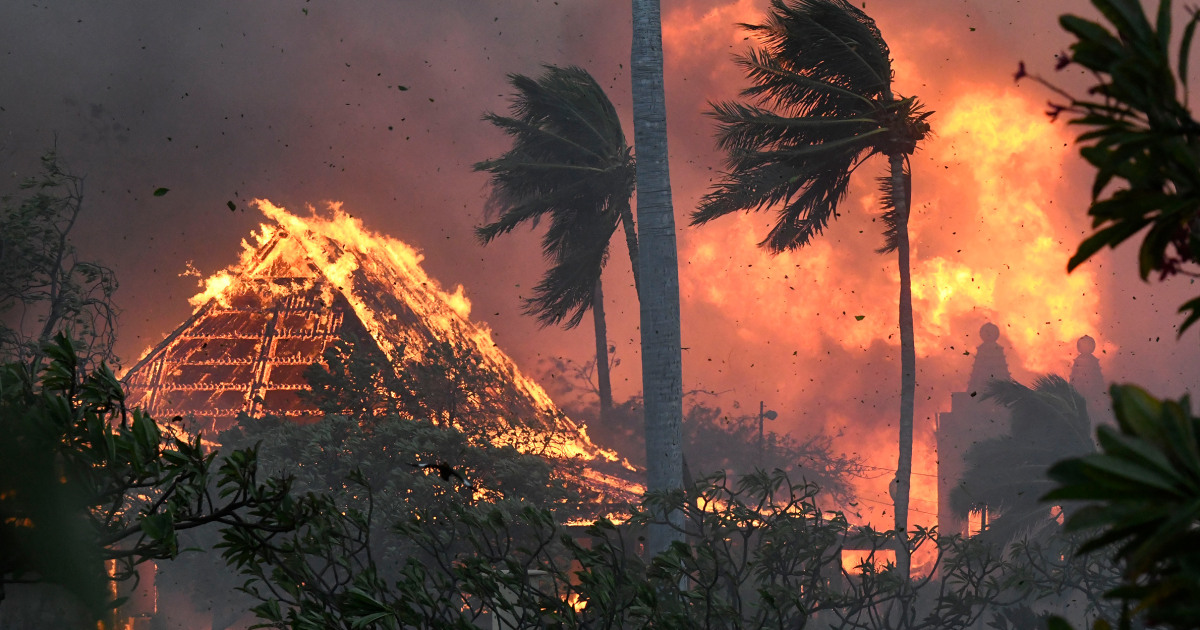
On the day wildfires destroyed much of Lahaina and killed at least 101 people, poor communications between Maui’s mayor and top state and local officials stymied their realization of how serious the situation was, Maui Mayor Richard Bissen told investigators in a report released Wednesday by the Hawaii attorney general’s office.
The initial installment of what’s planned as a three-part investigation commissioned by Attorney General Anne Lopez provided more context about how preparations and responses unfolded over 72 hours.
The 376-page report didn’t provide analysis or recommendations; instead, it covered pre-fire preparations and warnings and staffing levels of key emergency response agencies, and it included a ticktock of how the wind-whipped fire unfolded from Aug. 7 to Aug 9.
Later installments expected from the investigation, conducted by the nonprofit Underwriters Laboratories Fire Safety Research Institute, are expected to provide more critical feedback and analysis of preparations and responses to the fire.
The Aug. 8 fire — the deadliest in the U.S. in the last century — killed at least 101 people. It also burned 6,271 acres, destroyed 2,173 homes, businesses and other structures and caused more than $6 billion in damage to Lahaina.
Bissen recalled to investigators that most of the focus that morning for him and others was on a fire on another part of the island, in Kula.
During an online meeting with state and federal emergency management officials that morning, the main concerns were the Kula fire and blazes on the Big Island, he told investigators.
But as the day wore on, Bissen recalled that information started “trickling in” over social media and in calls from the lieutenant governor, telling them there “was no reliable communication other than (public safety) radio.”
“Nobody knew how bad it was,” Bissen recalled to investigators.
Bissen’s comments reflect how slow and ill-prepared he and other officials were in grasping how grave the situation was.
It also revealed that Herman Andaya, Maui’s top emergency management official, who was in Honolulu at the time for a conference, wasn’t asked to return to Maui.
Maui resident and community activist Tiare Lawrence said she was disappointed in the report.
“We were hoping that we would get more information in terms of the actual cause that led up to the fire,” Lawrence said Wednesday. “I think, you know, if you’re from Lahaina and from Hawaii, we pretty much know what the cause was. And we’ve always known the issues for years.
“We’ve been asking the county for well over a decade to fix a lot of the problems that led up to this catastrophe.”
The disaster spawned multiple lawsuits, most of which blame Hawaiian Electric Co. for causing the fire. The utility has acknowledged that one of its downed power lines ignited a blaze early Aug. 8 off Lahainaluna Road in the hills above Lahaina. Maui County announced a few hours later that firefighters had fully contained it.
Hawaiian Electric has denied it’s responsible for the fire that flared up in the same area that afternoon and later exploded, causing the widespread deaths and destruction.
The official cause remains under investigation by the federal Bureau of Alcohol, Tobacco, Firearms and Explosives.
Several of the lawsuits also point to Maui County’s failure to sound its outdoor emergency sirens ahead of the blaze as a crucial mistake. The county’s emergency management director at the time, Herman Andaya, who defended the decision not to sound the sirens in the aftermath of the blaze, resigned shortly after the catastrophe.
The Maui Fire Department released its own after-action report Tuesday, which chronicles how wildfires and the emergency response to them unfolded across the island from Aug. 7 to Aug. 11, during a tropical storm that had prompted red flag warnings in the preceding days.
The 84-page report, compiled by the Western Fire Chiefs Association based on more than 200 interviews and data analysis, listed 111 recommendations and 17 challenges in preparing for and preventing wildfires on Maui and elsewhere in Hawaii.
Some of the key takeaways included a need for better advance preparation by emergency officials, such as pre-positioning firefighting equipment and getting backup equipment ready during red flag warnings. The report also called out a need for better evacuation coordination between fire and police agencies, noting that main roadways across Maui were choked by traffic and blocked by debris as the fire raged.
Blocked evacuation routes prevented several people from escaping the fire, interviews and records show. An NBC News special report in February found that most people who died lived in Kuhua Camp, a cramped neighborhood along a tangle of narrow streets typically crowded with parked cars, trucks and boats that made access challenging.
On the day of the fire, toppled trees and power lines — including a fallen mango tree that blocked a key intersection — trapped several people trying to flee.